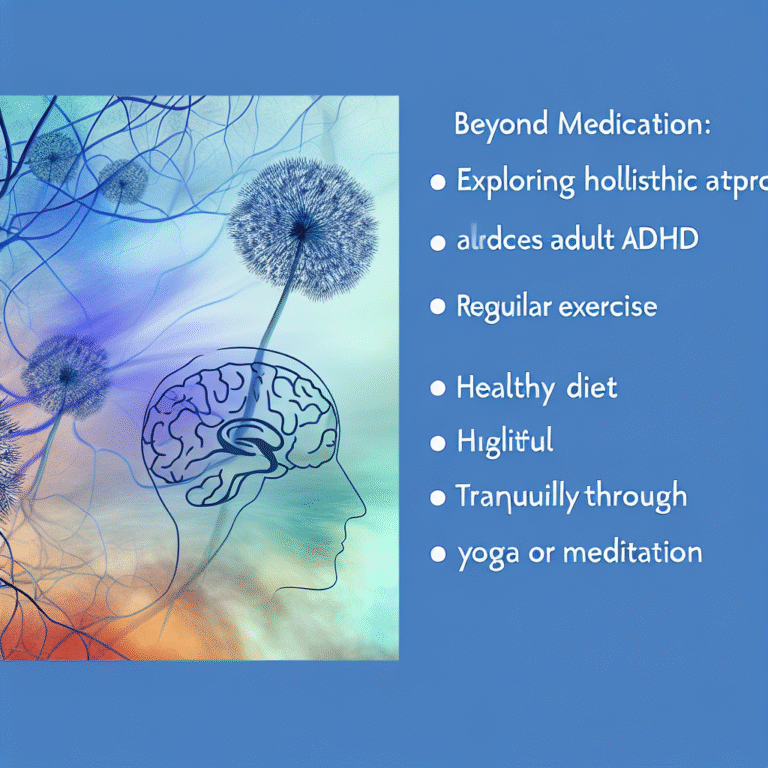
The Silent Battle: Symptoms of High-Functioning Depression in Everyday Life
Introduction
In a world that often emphasizes hustle and achievement, the reality of mental health struggles can become obscured, particularly when it comes to high-functioning depression. This condition, while not formally recognized in medical texts, represents a silent battle that many individuals face daily. Characterized by persistent feelings of sadness and despair, high-functioning depression allows individuals to maintain a semblance of normalcy as they perform well at work or in relationships, all while hiding their internal conflicts. Understanding The Silent Battle: Symptoms of High-Functioning Depression in Everyday Life is essential for fostering empathy, creating support networks, and encouraging those affected to seek help.
This article delves deep into what high-functioning depression looks like, exploring symptoms, real-world implications, and strategies for coping. By the end, we hope to empower you with insights that can help not only those struggling with this condition but also friends, family, and colleagues who may offer support.
Understanding High-Functioning Depression
What is High-Functioning Depression?
High-functioning depression, often described as feeling “down” or “blue” while still managing to fulfill responsibilities, might not always be visible. Individuals battling this form of depression are often perceived as “doing fine” or even thriving, which makes their suffering even more insidious. Unlike major depressive disorder, those with high-functioning depression can mask their symptoms quite effectively, living seemingly productive lives that hide significant emotional pain.
The Spectrum of Symptoms
The symptoms of high-functioning depression can vary but often include:
- Persistent Low Mood: A constant feeling of sadness, even amidst happy moments.
- Emotional Numbness: Difficulty in feeling pleasure or joy in activities once enjoyed.
- Fatigue and Low Energy: Often mistaken for tiredness from a busy schedule.
- Sleep Disturbances: Insomnia or oversleeping becomes a regular issue.
- Irritability or Anxiety: Constant feelings of frustration or unease.
- Difficulty Concentrating: Challenges in focus leading to reduced productivity.
Case Study: Sarah’s Story
Sarah, a successful marketing professional, often found herself overwhelmed yet unable to pinpoint the reason. Colleagues admired her ability to meet deadlines and conduct presentations with enthusiasm. Inside, however, Sarah grappled with feelings of inadequacy and sadness that overshadowed her accomplishments.
While she appeared the picture of success, her struggle exemplifies The Silent Battle: Symptoms of High-Functioning Depression in Everyday Life. Her journey underscores the importance of recognizing that external success does not equate to internal wellness.
Unmasking the Signs in Everyday Life
The Workplace Impact
High-functioning depression often manifests in professional environments as:
- Overachievement: Individuals may go above and beyond to compensate for their internal struggles.
- Isolation from Peers: Despite working alongside others, those affected may feel an overwhelming sense of solitude.
- Increased Absenteeism: While they may show up physically, emotionally disengaged employees can lead to productivity dips.
Chart: Recognizing High-Functioning Depression in the Workplace
| Symptoms | Observable Behaviors | Impact on Work |
|---|---|---|
| Persistent Low Mood | Frequent sighing, downcast eyes | Decreased motivation |
| Emotional Numbness | Lack of enthusiasm in meetings | Poor teamwork |
| Irritability or Anxiety | Snapping at colleagues | Increased conflicts |
| Difficulty Concentrating | Misplacing important documents | Missed deadlines |
Case Study: Mike’s Journey
Mike, a software developer, thrived in his job, regularly meeting critical deadlines. Despite his work success, he was often irritable and struggled to connect with his teammates. Mike’s case highlights that even the most "functional" profiles can harbor deep emotional distress and anxiety.
Building Personal Relationships Amidst the Struggle
Symptoms in Relationships
High-functioning depression doesn’t just impact work; it can also strain relationships:
- Withdrawal from Social Activities: An increase in isolation or avoidance of social gatherings.
- Difficulty Opening Up: Fear of vulnerability can prevent honest communication with loved ones.
- Tension in Close Relationships: Frustration might lead to the misinterpretation of loved ones’ intentions.
Table: The Emotional Toll on Relationships
| Relationship Aspect | High-Functioning Depression Impact | Potential Consequences |
|---|---|---|
| Communication | Reluctance to share feelings | Increased misunderstandings |
| Social Interactions | Often declines invitations | Feelings of loneliness |
| Supportive Dynamics | May push loved ones away | Strains bonds of trust |
Case Study: Emily’s Experience
Emily, a dedicated wife and mother, often masked her emotional struggles by being the “strong one” in her family. While she made an effort to maintain a household appearance, her internal battles became a source of distress, impacting her ability to be fully present with her family. Emily’s story is a poignant reminder of the toll high-functioning depression can take on meaningful relationships.
Coping Strategies for High-Functioning Depression
Prioritizing Self-Care
- Mindfulness and Meditation: Practicing mindfulness can increase awareness of emotions and promote relaxation.
- Physical Activity: Regular exercise can enhance mood and reduce symptoms of depression.
- Creative Outlets: Engaging in hobbies can provide an emotional release.
Seeking Professional Help
Engaging with mental health professionals can offer tailored coping strategies, therapy techniques, or medication if needed. High-functioning individuals might remain resistant to seeking help due to stigma, but awareness is crucial.
Case Study: Alex’s Transformation
Alex decided to seek help after recognizing patterns in his behavior that were starting to affect his job performance and relationships. Through therapy, he learned valuable coping mechanisms, and while the process was challenging, it marked the beginning of reclaiming his life from high-functioning depression.
Conclusion
High-functioning depression is a silent but potent experience that many endure without external acknowledgment. Understanding The Silent Battle: Symptoms of High-Functioning Depression in Everyday Life paves the way for compassion, support, and awareness. If you recognize yourself in this article or see someone you care about struggling, know that you are not alone.
Taking action to address these hidden battles can transform lives. Whether through professional help, personal support systems, or simply paying attention to the empathizing signs, every small step counts in overcoming this condition.
FAQs
1. What is the difference between high-functioning depression and major depressive disorder?
High-functioning depression allows individuals to maintain daily responsibilities despite experiencing depressive symptoms. In contrast, major depressive disorder often impairs one’s ability to function at a standard level.
2. How can I help a friend who I think might be experiencing high-functioning depression?
Start with an open conversation that emphasizes support without judgment. Sharing resources, such as hotlines or local mental health professionals, can also be beneficial.
3. Are there specific therapies recommended for high-functioning depression?
Cognitive-behavioral therapy (CBT) is often effective, as it addresses dysfunctional thoughts and behaviors. Other methods can include mindfulness practices and support groups.
4. Can exercise really help with symptoms of high-functioning depression?
Yes, regular physical activity has been shown to increase the production of endorphins, leading to improved mood and overall mental health.
5. Is medication necessary for everyone dealing with high-functioning depression?
Not necessarily. Medication can be effective for some individuals, while others may find relief through therapy and lifestyle changes. It’s best to consult with a healthcare provider for personalized recommendations.
By understanding The Silent Battle: Symptoms of High-Functioning Depression in Everyday Life, we can foster a culture of compassion, breakdown stigma, and encourage those in distress to seek the help they deserve. Remember, acknowledging mental health struggles is the first step towards recovery. Let us lift the veil and support each other on this journey towards healing.















